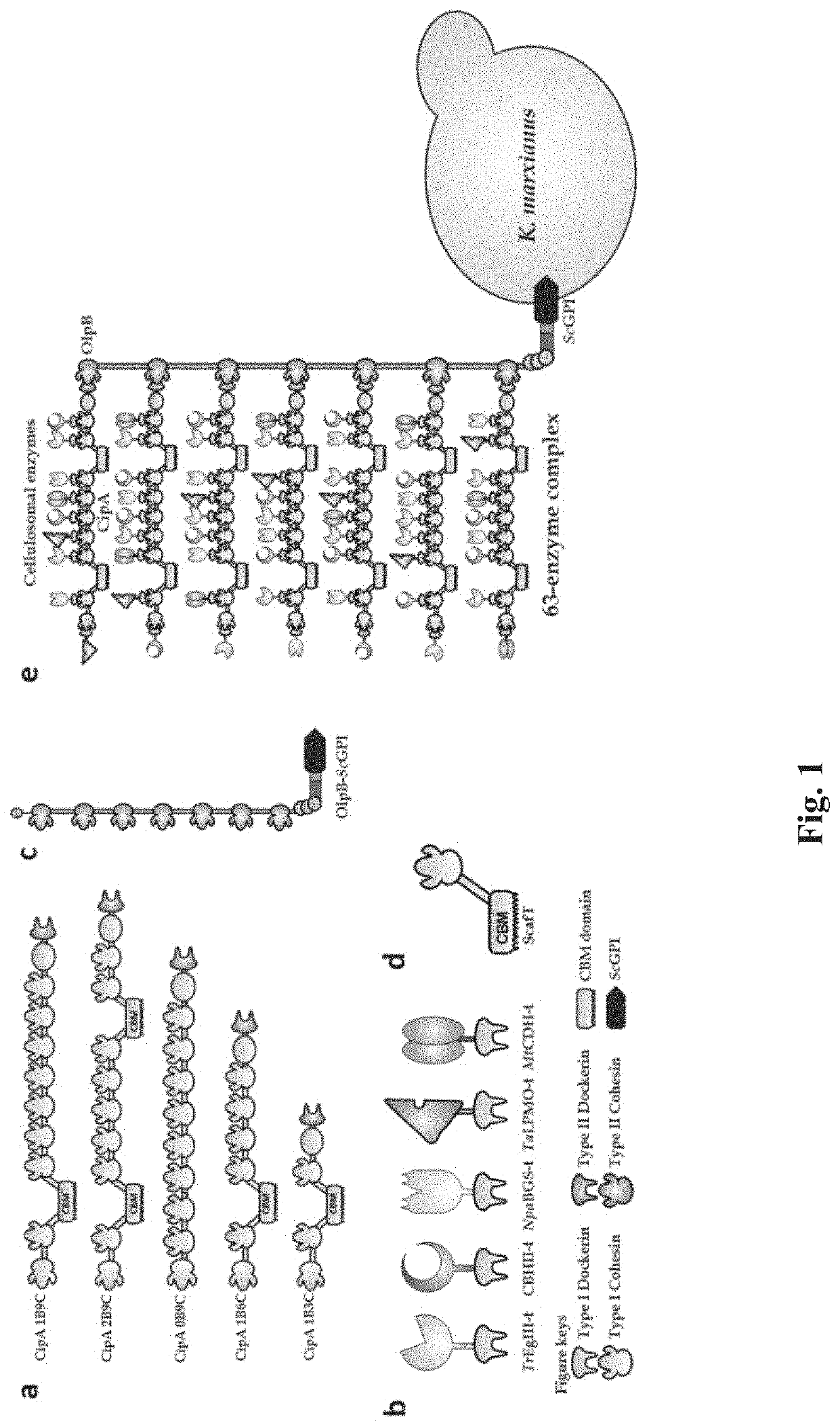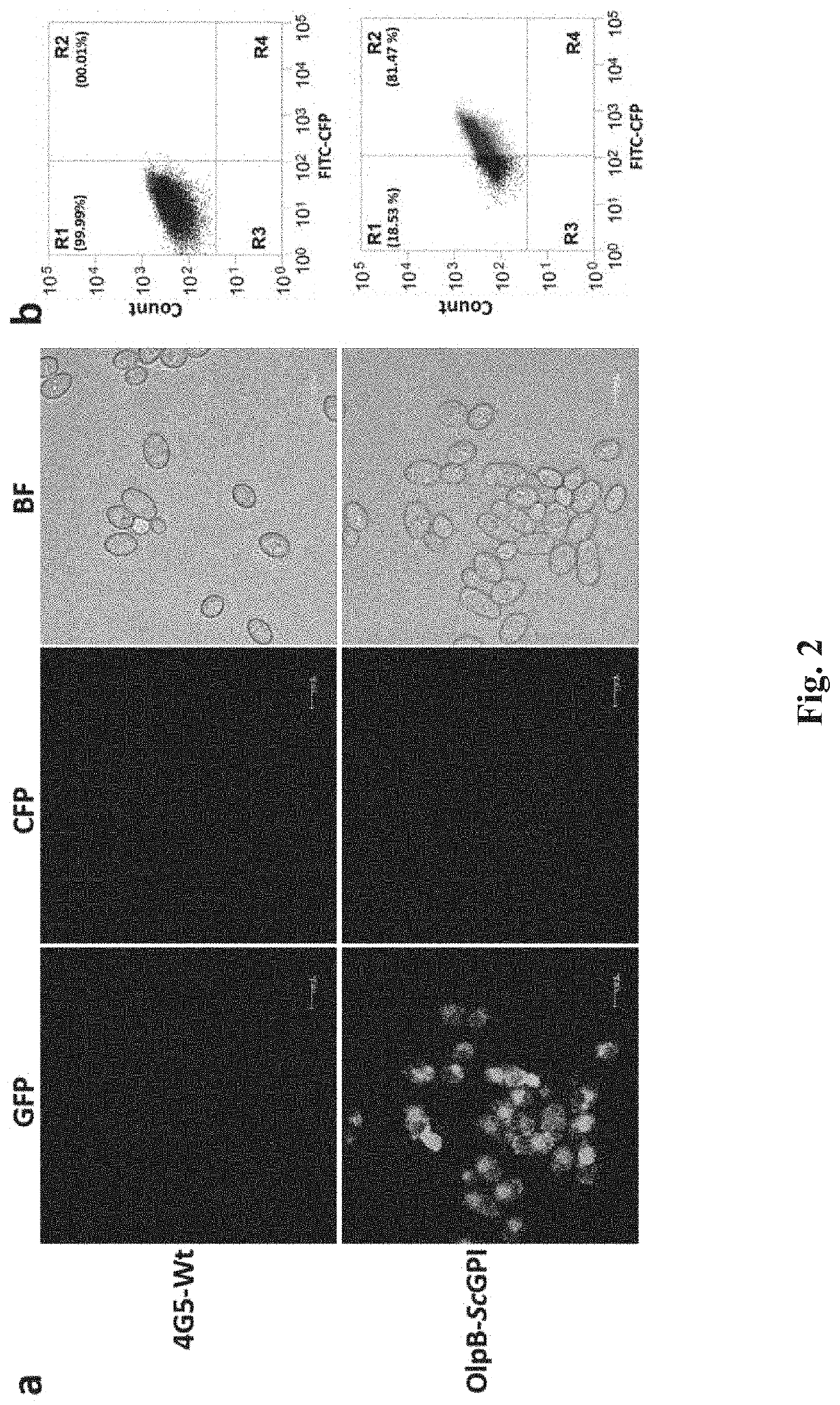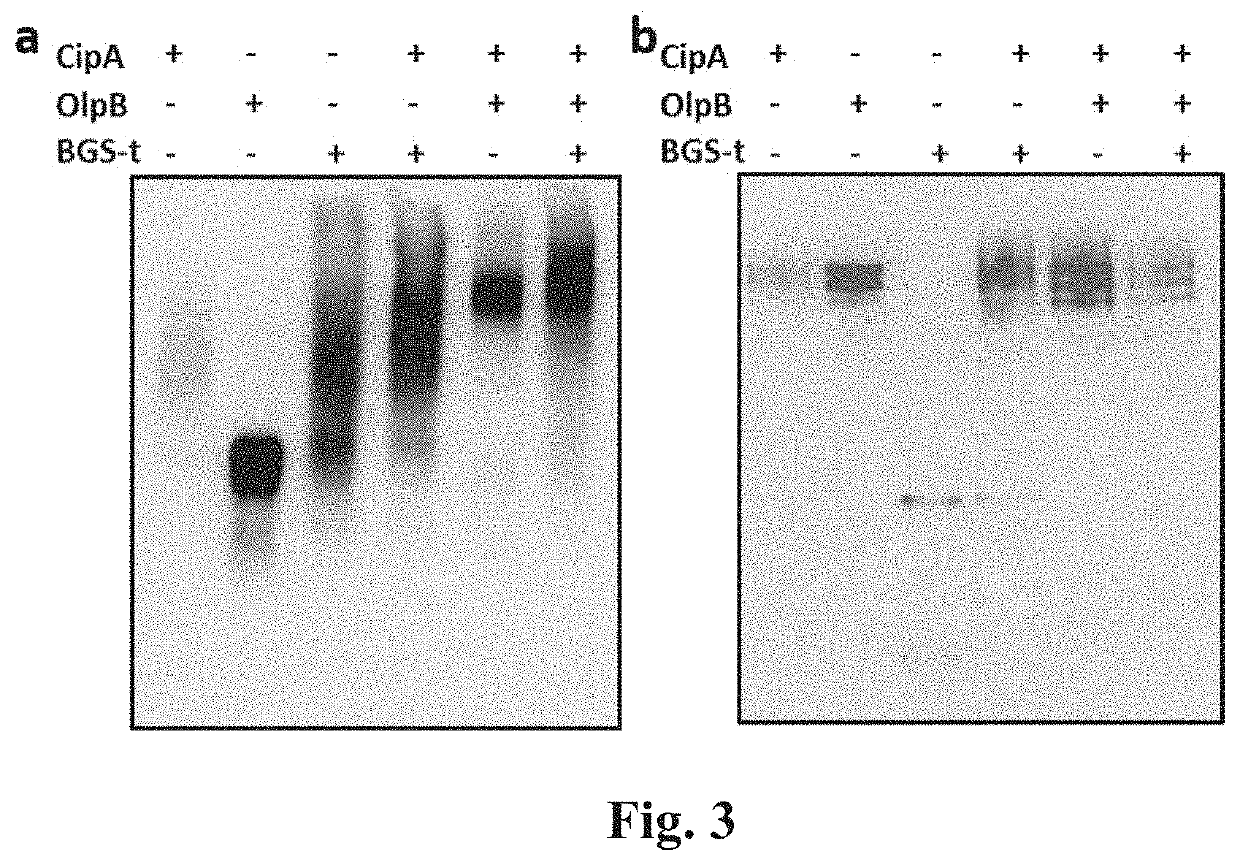Recombinant cellulosome complex and uses thereof
- Summary
- Abstract
- Description
- Claims
- Application Information
AI Technical Summary
Benefits of technology
Problems solved by technology
Method used
Image
Examples
examples
Methods
Strains and Media
[0068]Escherichia coli strain DH5α was used as the host for plasmid construction and propagation. E. coli strain JM110 was used to demethylate plasmid and to ligate large DNA fragments. E. coli strains were cultured in Luria-Bertani (LB) medium (10 g / L tryptone, 5 g / L yeast extract, and 10 g / L NaCl) supplemented with 50 μg / mL ampicillin. Yeast Kluyveromyces marxianus 4G5 strain was used to develop a CBP host, which was maintained in YPG medium (1% yeast extract, 2% peptone, 2% galactose) and cultured at 30° C. at 300 rpm. Yeast transformants were cultured in YPG media supplemented with either G418 or hygromycin B at a concentration of 200 μg / mL.
Cellulosomal Construct Design and Synthesis
[0069]Scaffolds (CipA) were designed in a biomimetic manner using the C. thermocellum CipA gene as a backbone, which has nine Type I cohesins with a CBM. The original CipA was named CipA 1B9C since it has one CBM (B) and nine cohesins (C). Similarly, synthetic scaffolds CipA 1...
PUM
| Property | Measurement | Unit |
|---|---|---|
| Molar density | aaaaa | aaaaa |
| Cell angle | aaaaa | aaaaa |
| Chemical shift | aaaaa | aaaaa |
Abstract
Description
Claims
Application Information
 Login to View More
Login to View More - R&D
- Intellectual Property
- Life Sciences
- Materials
- Tech Scout
- Unparalleled Data Quality
- Higher Quality Content
- 60% Fewer Hallucinations
Browse by: Latest US Patents, China's latest patents, Technical Efficacy Thesaurus, Application Domain, Technology Topic, Popular Technical Reports.
© 2025 PatSnap. All rights reserved.Legal|Privacy policy|Modern Slavery Act Transparency Statement|Sitemap|About US| Contact US: help@patsnap.com



